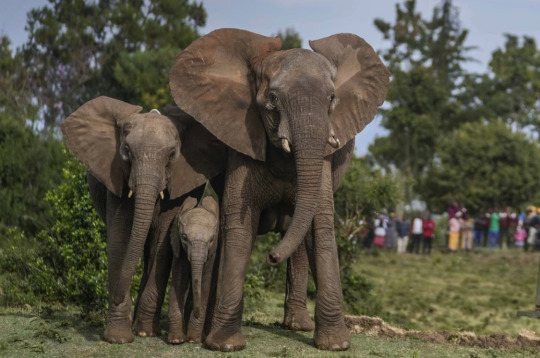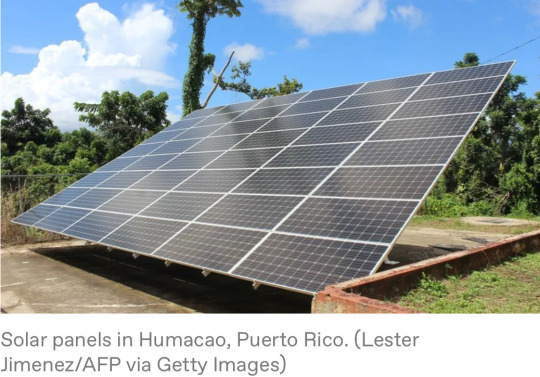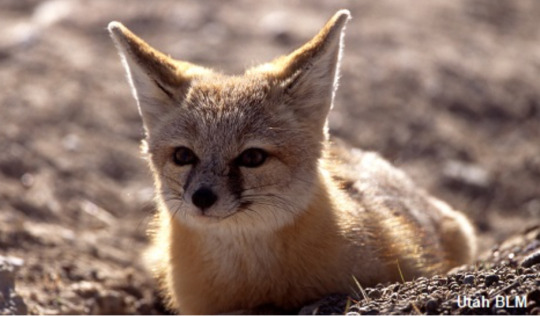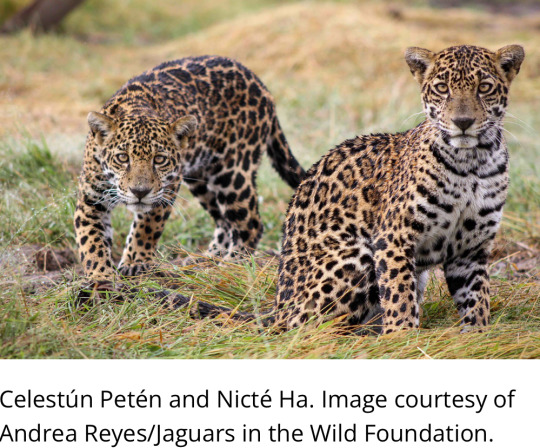#infrastructure Kenya
Explore tagged Tumblr posts
Text
Top Applications of Stainless Steel 304 & 316 in Construction and Infrastructure Projects in Tanzania and Kenya
Tanzania and Kenya's construction and infrastructure sectors are undergoing large changes, pushed by monetary increases, urbanization, and huge-scale development initiatives. Stainless steel 304 (SS 304) and stainless steel 316 (SS 316) have emerged as important substances in these tasks due to their sturdiness, corrosion resistance, and flexibility. From contemporary homes to transportation networks, SS 304 and 316 programs play an important role in shaping the infrastructure landscape of these African nations.
Why Stainless Steel is Ideal for Construction in Tanzania and Kenya
Tanzania and Kenya revel in numerous climatic situations, including excessive humidity, coastal saline air, and fluctuating temperatures. These elements necessitate the creation of substances that could face harsh environments without compromising energy or aesthetic enchantment. Stainless steel, especially SS 304 and SS 316, gives splendid resistance to corrosion and put on, making it a favored desire for infrastructure development in those areas.
SS 304 and SS 316 Applications in African Projects
Stainless Steel 304 and 316 are famous for their programs in various industries, but their significance in construction and infrastructure tasks in Tanzania and Kenya can't be overstated. Below are the top programs of SS 304 and 316 in those regions:
1. Structural Components of Modern Buildings
Stainless metal is widely utilized in constructing skyscrapers, commercial complexes, and home homes. SS 304 is a famous desire for indoor structural components due to its electricity and affordability, whilst SS 316, with its higher molybdenum content material, is right for outside packages exposed to corrosive environments.
Examples in Tanzania: The Dar es Salaam Financial Hub incorporates stainless steel in its façade and inner structures for both aesthetic appeal and durability.
Examples in Kenya: Nairobi’s Upper Hill district functions several high-upward thrust homes utilizing stainless steel for curtain walls and structural reinforcements.
2. Bridges and Flyovers
Tanzania and Kenya are expanding their transportation infrastructure to help growing populations. Stainless metal is a vital material in constructing bridges and flyovers, providing excessive tensile strength and resistance to environmental degradation.
SS 304 packages: used in pedestrian bridges and small-scale systems due to its cost-effectiveness.
SS 316 applications: preferred for large-scale tasks inclusive of the Nyali Bridge in Mombasa, Kenya, wherein exposure to saltwater necessitates superior corrosion resistance.
3. Water Supply and Treatment Facilities
Access to smooth water is a concern in infrastructure development. Stainless steel for constructing water pipelines, storage tanks, and remedy plants is vital due to its hygienic properties and capability to resist corrosion from chemicals.
SS 304 packages: pipes and tanks in inland water projects in Tanzania.
SS 316 applications: Coastal desalination vegetation in Kenya, where saline environments call for better-grade stainless steel.
4. Public Transportation Hubs
Railway stations, airports, and bus terminals in Tanzania and Kenya require robust and visually attractive materials. Stainless metal performs a pivotal role in building these centers by ensuring structural integrity and a current appearance.
Examples:
The Standard Gauge Railway (SGR) in Kenya consists of chrome steel in its station fittings and handrails.
Julius Nyerere International Airport in Tanzania uses SS 316 for its terminals to resist humid conditions.
5. Energy Infrastructure
Renewable strength initiatives, such as wind farms and solar installations, are growing in each nation. Stainless metal is critical in production aid systems and garage units.
SS 304 applications: components in solar panel frames and helps.
SS 316 applications: Used in wind turbine systems close to coastal areas in Kenya, imparting resistance to salt-laden air.
6. Roadside Safety and Railings
Safety is the pinnacle of precedence in infrastructure tasks, and stainless steel is the cloth of preference for roadside railings, crash barriers, and guardrails. Its power ensures protection, and at the same time, its corrosion resistance minimizes renovation costs.
SS 304 and 316 programs: Widely utilized in highways connecting primary cities like Nairobi to Mombasa and Dodoma to Dar es Salaam.
7. Cultural and Public Spaces
Urban improvement tasks in Tanzania and Kenya often include parks, museums, and cultural centers. Stainless metal provides an element of modernity and durability to these spaces.
Examples:
Nairobi’s Karura Forest walkway utilizes chrome steel railings.
Tanzania’s Uhuru Monument integrates stainless steel for its glossy, long-lasting design.
8. Industrial Infrastructure
The fast industrialization in those nations needs materials that can handle heavy equipment and chemical exposure. Stainless metal is substantially used in factories, warehouses, and commercial plants.
SS 304 packages: supports and stores gadgets for trendy industries.
SS 316 packages: Used in chemical and food processing plants for their advanced corrosion resistance.
9. Healthcare Facilities
Hospitals and clinics are essential in each urban and rural improvement. Stainless steel is utilized in construction due to its hygienic properties and resistance to bacteria.
SS 304 programs: Operating tables, furniture, and railings.
SS 316 applications: Surgical gadgets and environments requiring sterility.
Why Choose Stainless Steel for African Projects?
Durability: Stainless metal ensures lengthy-lasting overall performance in both coastal and inland environments.
Low Maintenance: Its resistance to corrosion and put-on reduces lengthy-time period fees.
Aesthetic Appeal: Modern designs require materials that are both useful and visually attractive.
Sustainability: Stainless steel is 100% recyclable, aligning with international sustainability desires.
Your Partner in Stainless Steel Solutions
At Vishal Tube Industries, we recognize the essential role of amazing substances in infrastructure projects. With a dedicated crew of over one hundred fifty personnel and modern-day manufacturing centers, we specialize in stainless steel seamless tubes, welded tubes, and U-tubes. Our products meet stringent international standards, ensuring unmatched reliability and performance.
With an international presence and a focal point on first-class and innovation, we offer tailor-made answers for huge and medium-scale initiatives, such as production projects in Tanzania and infrastructure in Kenya. Trust Vishal Tube Industries to deliver top-grade stainless steel for constructing Africa's future.
Final Thoughts
The applications of SS 304 and 316 in construction and infrastructure tasks are substantial and sundry, playing a pivotal position in Tanzania’s and Kenya’s growth. Whether it’s cutting-edge homes, bridges, or energy infrastructure, stainless steel remains a cornerstone of improvement. By choosing Vishal Tube Industries, you’re no longer simply making an investment in materials; you’re making an investment in the future of African infrastructure.
#SS 304 and 316 applications#construction projects Tanzania#infrastructure Kenya#stainless steel for building#SS in African projects
0 notes
Text
African poverty is partly a consequence of energy poverty. In every other continent the vast majority of people have access to electricity. In Africa 600m people, 43% of the total, cannot readily light their homes or charge their phones. And those who nominally have grid electricity find it as reliable as a Scottish summer. More than three-quarters of African firms experience outages; two-fifths say electricity is the main constraint on their business.
If other sub-Saharan African countries had enjoyed power as reliable as South Africa’s from 1995 to 2007, then the continent’s rate of real GDP growth per person would have been two percentage points higher, more than doubling the actual rate, according to one academic paper. Since then South Africa has also had erratic electricity. So-called “load-shedding” is probably the main reason why the economy has shrunk in four of the past eight quarters.
Solar power is increasingly seen as the solution. Last year Africa installed a record amount of photovoltaic (PV) capacity (though this still made up just 1% of the total added worldwide), notes the African Solar Industry Association (AFSIA), a trade group. Globally most solar PV is built by utilities, but in Africa 65% of new capacity over the past two years has come from large firms contracting directly with developers. These deals are part of a decentralised revolution that could be of huge benefit to African economies.
Ground zero for the revolution is South Africa. Last year saw a record number of blackouts imposed by Eskom, the state-run utility, whose dysfunctional coal-fired power stations regularly break down or operate at far below capacity. Fortunately, as load-shedding was peaking, the costs of solar systems were plummeting.
Between 2019 and 2023 the cost of panels fell by 15%, having already declined by almost 90% in the 2010s. Meanwhile battery storage systems now cost about half as much as five years ago. Industrial users pay 20-40% less per unit when buying electricity from private project developers than on the cheapest Eskom tariff.
In the past two calendar years the amount of solar capacity in South Africa rose from 2.8GW to 7.8GW, notes AFSIA, excluding that installed on the roofs of suburban homes. All together South Africa’s solar capacity could now be almost a fifth of that of Eskom’s coal-fired power stations (albeit those still have a higher “capacity factor”, or ability to produce electricity around the clock). The growth of solar is a key reason why there has been less load-shedding in 2024...
Over the past decade the number of startups providing “distributed renewable energy” (DRE) has grown at a clip. Industry estimates suggest that more than 400m Africans get electricity from solar home systems and that more than ten times as many “mini-grids”, most of which use solar, were built in 2016-20 than in the preceding five years. In Kenya DRE firms employ more than six times as many people as the largest utility. In Nigeria they have created almost as many jobs as the oil and gas industry.
“The future is an extremely distributed system to an extent that people haven’t fully grasped,” argues Matthew Tilleard of CrossBoundary Group, a firm whose customers range from large businesses to hitherto unconnected consumers. “It’s going to happen here in Africa first and most consequentially.”
Ignite, which operates in nine African countries, has products that include a basic panel that powers three light bulbs and a phone charger, as well as solar-powered irrigation pumps, stoves and internet routers, and industrial systems. Customers use mobile money to “unlock” a pay-as-you-go meter.
Yariv Cohen, Ignite’s CEO, reckons that the typical $3 per month spent by consumers is less than what they previously paid for kerosene and at phone-charging kiosks. He describes how farmers are more productive because they do not have to get home before dark and children are getting better test scores because they study under bulbs. One family in Rwanda used to keep their two cows in their house because they feared rustlers might come in the dark; now the cattle snooze al fresco under an outside lamp and the family gets more sleep.
...That is one eye-catching aspect of Africa’s solar revolution. But most of the continent is undergoing a more subtle—and significant—experiment in decentralised, commercially driven solar power. It is a trend that could both transform African economies and offer lessons to the rest of the world."
-via The Economist, June 18, 2024. Paragraph breaks added.
#one of the biggest stories of this century is going to be the story of the African Renaissance#I promise you#well preferably they'll come up with a non-European term for it lol#but trust me it WILL happen and it will be SO good to see#africa#south africa#nigeria#kenya#solar#solar power#solar panels#solar pv#energy#clean energy#poverty#electrification#distributed energy#electricity#infrastructure#hope#solarpunk#good news#solar age#<- making that a tag now
416 notes
·
View notes
Video
youtube
Kenya gives EastAfrica earthquakes with these mega projects|2024 @Kimlud
#youtube#kimlud#Kenya gives EastAfrica earthquakes#mega projects#infrastructure#architecture#innovation#housing#data center#routes#railways#kenya#nairobi#mombassa#east africa#africa
2 notes
·
View notes
Text
10 Cities Around the World Will Receive a Huge Boost in Bike Infrastructure
This is so cool. Makes me want to add each city to my future travel list.
#biking#infrastructure#walkable cities#fortaleza brazil#brazil#addis ababa#ethiopia#bogotà#colombia#lisbon#portugal#milan#italy#mombasa#Kenya#pimbri-chinchwad#india#quelimane#mozambique#tirana#albania#Wellington#new zealand
3 notes
·
View notes
Text
Sugarcane Farmers in Kenya Join the Bonus Club as Govt Announces First-Ever Bonus
President William Ruto announced that sugar farmers will get a bonus for the first time in January 2025. The President said this results from robust reforms aimed at revamping the once-thriving sugar sector. He pointed out that Mumias Sugar Company has been placed under new management to ensure farmers and workers are paid on time, and that farmers get bonuses like others in tea and other…
#agriculture reforms Kenya#Bukhungu Stadium renovation#foreign exchange savings Kenya#Kakamega County development#Kakamega Governor’s Cup#Kakamega sugar production#Kenyan sports infrastructure.#Kenyan sugar industry#leasing programme Mumias#Mumias factory new management#Mumias Sugar Company revival#sports and agriculture Kenya#sugar farmers bonus#sugar farmers incentives Kenya#sugar production self-sufficiency#sugarcane farmers benefits#sugarcane farming in kenya#tea and sugarcane bonuses comparison#unlocking sports potential Kenya#William Ruto sugar reforms
0 notes
Text
Public infrastructure vandals should be treated as terrorists, CS Wandayi says – Kenya News Agency
Public infrastructure vandals are akin to terrorists and must be treated as so if the trend is to be contained, Cabinet Secretary for Energy, Opiyo Wandayi has said. According to Wandayi, there was need for stern action to be taken to contain the vice that was costing the government a fortune. He was speaking at the Amani children’s home in Gem constituency where he donated Christmas gifts…
0 notes
Text




Partially completed bypass road at the Kenyan coast bypassing the Island of Mombasa to connect the south and north coast regions directly.
1 note
·
View note
Text
Investing Wisely: Seizing the Opportunity of Buying Affordable Land in Kenya's Suburbs for Future Family Homes
Planting Seeds for Tomorrow: Building a Family Legacy Through Strategic Land Investment The dream of owning a family home is one that many share, and in Kenya’s evolving real estate landscape, buying affordable land in the suburbs presents a golden opportunity. While the initial investment might be modest, the long-term potential for growth is substantial. This article delves into the strategy of…

View On WordPress
#Affordable land#family home#family legacy#future planning#growth areas#infrastructure development#infrastructure projects#Kenya suburbs#legal clarity#long-term vision#property investment#property value appreciation#real estate strategy#strategic investment#urbanization
0 notes
Text
Nairobi City Plunges into Darkness: A Rare Glimpse at the Impact of a Power Outage
The city of Nairobi, Kenya, experienced a sudden and unexpected power outage recently, plunging millions of residents into darkness. The situation was chaotic and disorienting, leaving the city’s streets eerily quiet and still. In this exclusive footage, we take you through the aftermath of the power failure and show you how people are coping with the sudden disruption. The power outage caught…

View On WordPress
#African Cities#African Infrastructure#Backup Generators#Blackout#City Emergency#City Life#Community Impact#Critical Facilities#Daily Life#Disaster Response#Electrical Infrastructure#Electrical Outage#Electricity Failure#Emergency Power#Emergency Services#Energy Crisis#Energy Security#Infrastructure Failure#kenya news#Nairobi City#Power Failure#Power Grid#Power Outage#Public Safety#Public Services#Technology Dependence#Technology Failure#Urban Disruption#Urban Life
0 notes
Text
https://alignminds.com/

All over the world people are using the apps, software applications and digital infrastructure we helped to deliver.
We've been helping to deliver digital transformation across media, hospitality, retail and government sectors, making a difference to people's lives and ensuring a return on investment for our clients.
#Digital Transformation Service in India | Kenya | US#Software Development company in India | Kenya | US#Product Modernization company in India#Product Engineering Service in US#Product Support and Maintenance Service in India#IT Infrastructure Management Company in India | Kenya
1 note
·
View note
Text
Inequality + Slums in Velaris
kinda 👀 at the people who think slums and designated Poor™️ areas are supposed to be normal, especially in acotar w Velaris. They *shouldn't* to be normal especially for VeLAriS
The UN Definition of a slum:
.... individuals living under the same roof lacking one or more of the following conditions: access to improved water, access to improved sanitation, sufficient living area, housing durability, and security of tenure
Slums form and grow in different parts of the world for many different reasons. Causes include rapid rural-to-urban migration, economic stagnation and depression, high unemployment, poverty, informal economy, forced or manipulated ghettoization, poor planning, politics, natural disasters, and social conflicts.
Rural–urban migration
Many people move to urban areas primarily because cities promise more jobs, better schools for poor's children, and diverse income opportunities than subsistence farming in rural areas.
this doesn't really apply to Velaris as it is a closed in separated city from the rest of the night court
Urbanization
Some scholars suggest that urbanization creates slums because local governments are unable to manage urbanization, and migrant workers without an affordable place to live in, dwell in slums.
Rapid urbanization drives economic growth and causes people to seek working and investment opportunities in urban areas.
However, as evidenced by poor urban infrastructure and insufficient housing, the local governments sometimes are unable to manage this transition. This incapacity can be attributed to insufficient funds and inexperience to handle and organize problems brought by migration and urbanization.
again, I don't see thus happening due to it being a private and secluded city unless they're taking in a rapid amount of SA survivors- the only outsiders brought into the city
Poor house planning
Insufficient financial resources and lack of coordination in government bureaucracy are two main causes of poor house planning.
This would mean that Rhysand is not paying attention to evenly distributed wealth or mindful government oversight in poor house planning. If there are low income folks, adequate housing is not being provided
Colonialism and segregation
Some of the slums in today's world are a product of urbanization brought by colonialism. For instance, the Europeans arrived in Kenya in the nineteenth century and created urban centers such as Nairobi mainly to serve their financial interests. They regarded the Africans as temporary migrants and needed them only for supply of labour.
The housing policy aiming to accommodate these workers was not well enforced and the government built settlements in the form of single-occupancy bedspaces. Due to the cost of time and money in their movement back and forth between rural and urban areas, their families gradually migrated to the urban centre. As they could not afford to buy houses, slums were thus formed.
I wouldn't say this qualified for Velaris, internally, but as for the Nightcourt as a whole, the separation of the CoN and Illyria from the golden city that is Velaris is very telling
The citizens of the CoN aren't allowed to leave the city and as we have seen from Rhysand, they will have businesses turn CoN citizens away in Velaris
Illyria is full of war torn camps where inequality thrives and there is not adequate housing or supplies, as we see when Cassian said he fought other children for supplies. We also see it when Cassian brings blankets for the Illyrians
Poor infrastructure, social exclusion and economic stagnation
Social exclusion and poor infrastructure forces the poor to adapt to conditions beyond his or her control. Poor families that cannot afford transportation, or those who simply lack any form of affordable public transportation, generally end up in squat settlements within walking distance or close enough to the place of their formal or informal employment.
This overall I feel best exemplifies Velaris. As far as we're made aware there aren't vehicles in Velaris and we don't make notice of any other forms of transportation besides winnowing. The closest we get is flying and we've only seen Cassian, Azriel, Rhysand and Feyre. With Winnowing, it's only Mor and Rhysand and Feyre.
Winnowing is not a common practice ability that all faeries have. There does seem to be a suggestion that there are people who can Winnow, though this is based on Rhysand telling Feyre about his dad being unable to Winnow into the HoW
This leaves many people being unable to have any form of transportation outside of walking.
Informal economy
Many slums grow because of growing informal economy which creates demand for workers. Informal economy is that part of an economy that is neither registered as a business nor licensed, one that does not pay taxes and is not monitored by local, state, or federal government.
There are very few businesses we see in Velaris. We see Rita's, the dive bar and some art studios. There isn't enough shown about legitimate businesses to really show much about an informal economy
Poverty
Urban poverty encourages the formation and demand for slums. With rapid shift from rural to urban life, poverty migrates to urban areas. The urban poor arrives with hope, and very little of anything else. They typically have no access to shelter, basic urban services and social amenities. Slums are often the only option for the urban poor.
Poverty has been witnessed with especially the Illyrians. But within Velaris, it stands to reason that the "grimy part of the city" where Nesta lives, and the bar she frequents, does not have the adequate infrastructure in place for proper wages- which would be Rhysands responsibility to make sure a minimums wage where people could thrive would exist
tldr: Velaris has slums and it's through Rhys' shitty job as a high lord by not creating adequate social systems or infrastructure where poor folks can live without being designated to the "grimy parts of the city"
#a court of thorns and roses#acotar#sjm critical#anti sjm#anti rhysand#anti cassian#anti inner circle
70 notes
·
View notes
Text
"Samuel Onyango’s office at Kibera Primary School is serene and spacious. His table is neatly arranged, with an assortment of files and an array of books. One side of his cream-colored office is decked with aggregate performance scores, and another shows off several trophies in a glass cabinet. Last year, Onyango’s school performed a traditional dance and scooped third place in the National Drama and Film Festivals, where schools across the country competed for the top prize.
But today Onyango, the school’s principal, is bragging about something much more basic: Thanks to an innovative community program, his students and teachers are no longer getting sick from dirty water.
Onyango’s school, with a staff of 30 and a student body of about 1,700, is in Kibera, a neighborhood in the Kenyan capital of Nairobi that is widely known as Africa’s largest informal settlement. It is a community of houses made from mud or tin sheeting where residents have to hustle to meet even their most basic needs, like electricity or clean water.
It is also a community where creativity and innovation, at the heart of any hustle, are changing how some people can access clean water — and making major ripples in public health.
Onyango’s school has long gotten its water the same way many people in Kibera do: by buying it from independent suppliers, who truck water in and sell it for around $30 per 10,000 liters (about 2,650 gallons). But trucked water can be contaminated, despite suppliers’ promises, and Onyango’s students and staff were often using unclean water at home, too. It was common, he says, for both teachers and students to get sick and miss school because of waterborne illnesses.
Last November, Onyango’s school got connected to an aerial clean water system built by a local grassroots organization called SHOFCO, which stands for Shining Hope for Communities. “Once we got connected to SHOFCO’s water,” Onyango says, “cases of these ailments reduced to nil.”
SHOFCO’s water distribution system currently reaches about 40,000 people and distributes more than 3.7 million gallons of clean water per month.
Access to safe drinking water — and its equitable distribution — underpins public health. But for the estimated 250,000 people in Kibera, who live without any government infrastructure, clean water is often a luxury. Many people are using illegal water connections, which proliferate among the poor — there are nearly 130 in just three lesser-resourced Nairobi neighborhoods. But those DIY hookups can mix clean water with raw sewage, and Kenyan officials have recently warned of a looming public health crisis if water access is not prioritized.
Shifting weather patterns also increase the risk of waterborne illness, government officials say. The Ministry of Health and the Kenya Red Cross Society have called out severe flooding during the El Niño weather pattern as a source of a recent major cholera outbreak in parts of the country. Kibera was not spared this risk: The floods led to the contamination of various sources of water in the sprawling neighborhood.
But the aerial piping system SHOFCO built in 2012 — the one that brings water to Onyango’s school — saved some Kibera residents, quite literally. With collaboration from health and county authorities, SHOFCO has all but eliminated diarrheal disease in the communities that use its aerial piping system, according to Gladys Mwende, a program officer at SHOFCO. In the health facilities SHOFCO runs, the incidences of diarrheal infections have also gone down, she adds.

Pictured: People in Kibera’s Makina section pass by the signature blue pillars that hold up SHOFCO’s aerial water piping system. Visual: Sarah Waiswa/Harvard Public Health Magazine
“[Poor sanitation is the reason] that our water is aerial piped,” says Kennedy Odede, the founder and CEO of SHOFCO. Piping water in helps clean water maintain its integrity without interference from elements including tampering. In a huge community with no major infrastructure, piping seemed impossible — there was no money and no will to build a disruptive underground system connected to the city’s main water supply. Instead, Odede and his team put the pipes up in the air. “As somebody who grew up in Kibera, to see this clean water — which I have also drank — is powerful.”
SHOFCO’s water distribution system currently reaches about 40,000 people and distributes more than 3.7 million gallons of clean water per month — nearly 46 million gallons per year — at community water kiosks, which residents access with tokens linked to the mobile money platform M-Pesa. The water kiosks are pre-programmed to fill jerry cans that hold about five gallons at a cost of 3 Kenyan shillings, or about 23 U.S. cents.
A recent evaluation of SHOFCO’s clean water efforts, undertaken by the African Population and Health Research Center, shows diarrheal disease among children under age five have decreased by 31 percent where community members used SHOFCO water kiosks and received SHOFCO’s sanitation messaging.
“We don’t get as many cases of diarrhea even though now we are in the middle of the floods,” Mwende says. “Communities have not reported any outbreaks within the areas where we are working.”
Mohammed Suleiman is grateful for the change. Suleiman, 25, was born here, and it’s been his job for the last 18 years to fetch 135 gallons of water daily for his family’s personal needs and for their samosa business.
Two months ago, Sulieman contracted typhoid from the unsanitary water he was consuming. Once he recovered, he says, switching to SHOFCO water kiosks was a no-brainer.
“I don’t know where the other independent vendors get it from,” he says. But he trusts SHOFCO water. “Water sourced from SHOFCO is cleaner than that of other vendors,” he says. “I don’t have to treat water from [SHOFCO] kiosks before consuming it.”
And he’s the living proof: Since switching to SHOFCO water, Suleiman hasn’t been sick even once."
-via Undark, August 13, 2024
198 notes
·
View notes
Video
youtube
Kenya gives EastAfrica earthquakes with these mega projects|2024 @Kimlud
#youtube#Kenya gives EastAfrica earthquakes with these mega projects|2024#kenya#Mega Project#Kenya innovation#savannah#silicon savannah#EastAfrica earthquakes#EastAfrica#East Africa#Africa earthquakes#earthquakes#infrastructure#construction#project development#future of africa#kenya tech#advanced development#architecture
0 notes
Text
Dandelion News - October 15-21
Like these weekly compilations? Tip me at $kaybarr1735 or check out my Dandelion Doodles on Patreon!
1. EV owners volunteer to drive voters to the polls in 11 states (and you can too)

“ChargeTheVote.org is a nonpartisan voter education and engagement initiative to enhance voter turnout in the 2024 election by providing zero-emission transportation in electric vehicles (EVs) to local polling locations. ChargeTheVote will also host a webinar for those who are interested in participating this coming Tuesday, October 22 at 7pm Eastern time.”
2. Kenya moves 50 elephants to a larger park, says it’s a sign poaching is low

“The elephant population in the […”Mwea National Reserve”…] has flourished from its capacity of 50 to a whopping 156 […] requiring the relocation of about 100 of [them…. The] overpopulation in Mwea highlighted the success of conservation efforts over the last three decades.”
3. Australian start-up secures $9m for mine-based gravity energy storage technology

““We expect to configure the gravitational storage technology [which the company “hopes to deploy in disused mines”] for mid-duration storage applications of 4 to 24 hours, deliver 80% energy efficiency and to enable reuse of critical grid infrastructure.“”
4. Africa’s little-known golden cat gets a conservation boost, with community help

“[H]unting households were given a pregnant sow [… so that they] had access to meat without needing to trap it in the wild. […] To address income needs, Embaka started […] a savings and loan co-op[… and an] incentive for the locals to give up hunting in exchange for regular dental care.”
5. 4.8M borrowers — including 1M in public service — have had student debt forgiven

“That brings the total amount of student debt relief under the administration to $175 billion[….] The Education Department said that before Biden's presidency, only 7,000 public servants had ever received student debt relief through the Public Service Loan Forgiveness program. […] "That’s an increase of more than 14,000% in less than four years.””
6. Puerto Rico closes $861M DOE loan guarantee for huge solar, battery project

“The solar plants combined will have 200 megawatts of solar capacity — enough to power 43,000 homes — while the battery systems are expected to provide up to 285 megawatts of storage capacity. [… O]ver the next 10 years, more than 90 percent of solar capacity in Puerto Rico will come from distributed resources like rooftop solar.”
7. Tim Walz Defends Queer And Trans Youth At Length In Interview With Glennon Doyle
“Walz discussed positive legislative actions, such as codifying hate crime laws and increasing education[.… “We] need to appoint judges who uphold the right to marriage, uphold the right to be who you are [… and] to get the medical care that you need.””
8. Next-Generation Geothermal Development Important Tool for Clean Energy Economy

““The newest forms of geothermal energy hold the promise of generating electricity 24 hours a day using an endlessly renewable, pollution-free resource[… that] causes less disturbance to public lands and wildlife habitat […] than many other forms of energy development[….]”
9. Sarah McBride hopes bid to be first transgender congresswoman encourages ’empathy’ for trans people

““Folks know I am personally invested in equality as an LGBTQ person. But my priorities are going to be affordable child care, paid family and medical leave, housing, health care, reproductive freedom. […] We know throughout history that the power of proximity has opened even the most-closed of hearts and minds.”“
10. At Mexico’s school for jaguars, big cats learn skills to return to the wild

“[A team of scientists] have successfully released two jaguars, and are currently working to reintroduce two other jaguars and three pumas (Puma concolor). [… “Wildlife simulation”] “keeps the jaguars active and reduces the impact of captivity and a sedentary lifestyle[….]””
October 8-14 news here | (all credit for images and written material can be found at the source linked; I don’t claim credit for anything but curating.)
#good news#hopepunk#electric vehicles#voting#elephant#kenya#conservation#australia#battery#energy storage#africa#cats#hunting#tw animal death#student loans#student debt#debt relief#education#puerto rico#solar#solar panels#solar energy#solar power#tim walz#lgbt#lgbtq#geothermal#renewableenergy#trans rights#transgender
28 notes
·
View notes
Text
Boosting Kenya’s Dairy Sector: JKUAT and Tassels Farm Enter Partnership on Dairy Farming
“Discover how JKUAT’s partnership with Tassels Farming Ltd is transforming Kenya’s dairy sector through advanced training, modern infrastructure, and sustainable practices in agribusiness education.” “Explore the impact of JKUAT and TSL’s collaboration on Kenya’s dairy industry, focusing on high-yield breed development, practical farmer training, and sustainable dairy farming innovations.” “Learn…
#agribusiness education#agricultural education Kenya#agriculture research Kenya#agriculture training programs#Bottom-Up Economic Transformation Agenda Kenya#dairy farming in Kiambu#dairy farming modernization#dairy farming techniques#dairy farming workshops#dairy infrastructure#dairy marketing strategies#dairy product marketing#dairy sector advancements#dairy value chain Kenya#food security Kenya#high-yield cows and goats#high-yield dairy breeds#JKUAT agribusiness#JKUAT center of excellence#JKUAT dairy farming partnership#JKUAT TSL MoU#Kenya agriculture innovation#Kenya dairy sector#local farmers Kenya#modern dairy techniques#rural economy development#sustainable agriculture Kenya#sustainable dairy farming#Tassels Farming Ltd#TSL dairy innovation
0 notes
Text
Devastating Brazil Floods Claim 83 Lives as Climate Change Submerges Cities

The recent floods in Rio Grande do Sul, Brazil, have led to the deaths of 83 people, making it one of the deadliest natural disasters in the region’s history. The death toll is expected to increase as recovery efforts continue. The catastrophic flooding has been attributed to climate change, compounding the already volatile weather patterns typical of the region.
In just four days, Rio Grande do Sul received more than 70 percent of its usual monthly rainfall for April. This deluge has resulted in widespread destruction, with roads being washed away, thousands left without water and electricity, and critical infrastructure severely damaged. The floods have had a devastating impact on local communities, disrupting daily life and causing significant economic hardship.
Brazilian climatologist Francisco Eliseu Aquino highlighted that this disaster was driven by a combination of Global warming and the El Niño-La Niña weather phenomenon. This deadly mix has not only affected Brazil but has also intensified storms across the globe, from Indonesia to Kenya and the United Arab Emirates. According to Michael McPhaden, Senior Scientist with NOAA’s Pacific Marine Environmental Laboratory, extreme El Niño and La Niña events could become more frequent and severe by the end of the century if greenhouse gas emissions continue at their current rate.
Continue reading.
#brazil#brazilian politics#politics#environmental justice#climate change#rio grande do sul floods 2024#mod nise da silveira#image description in alt
31 notes
·
View notes